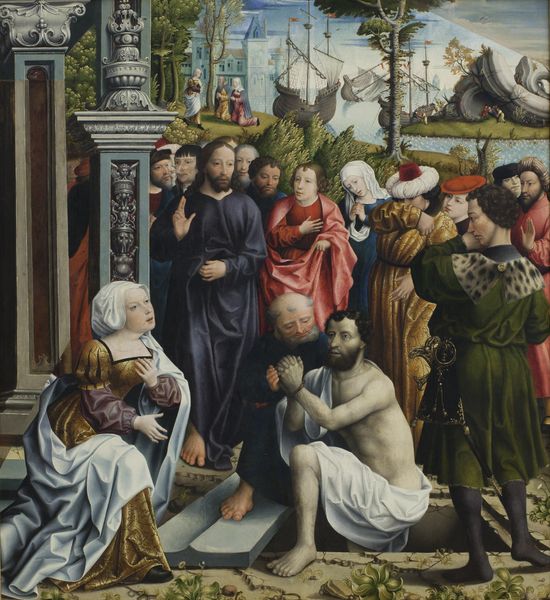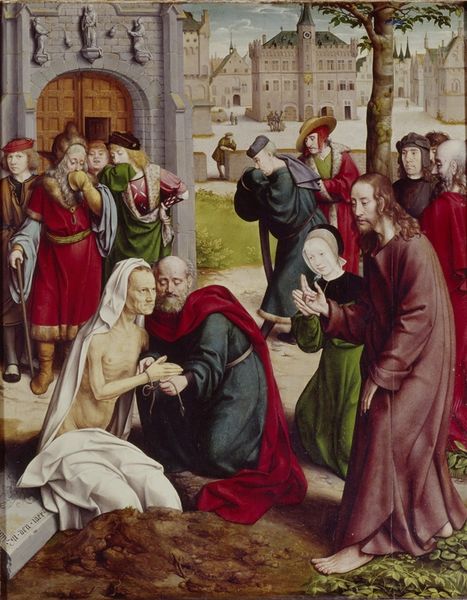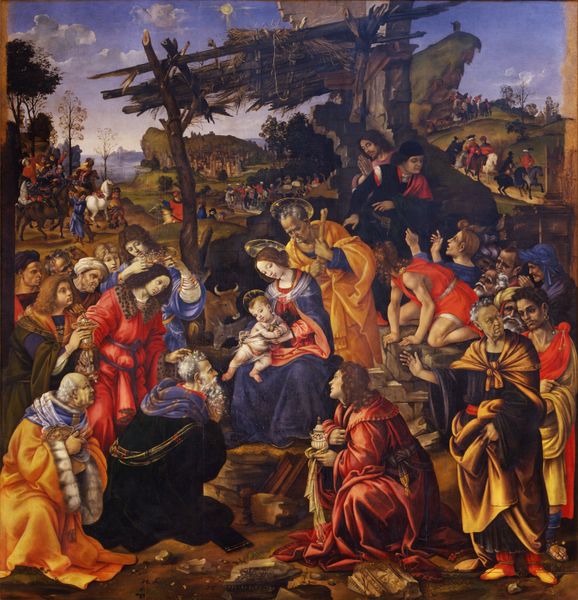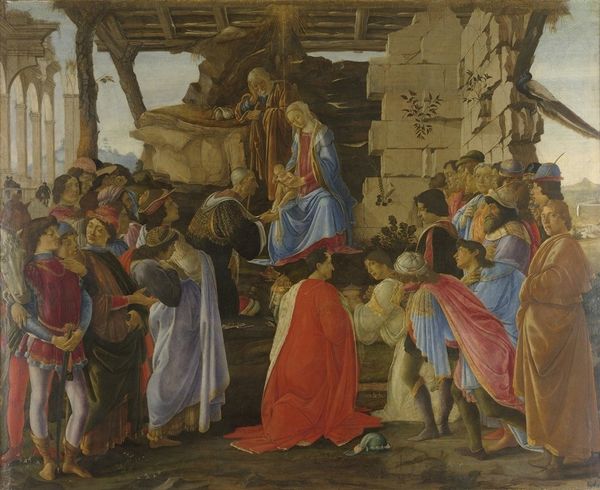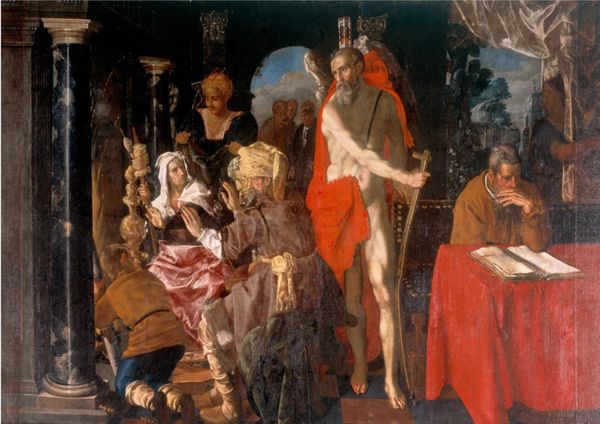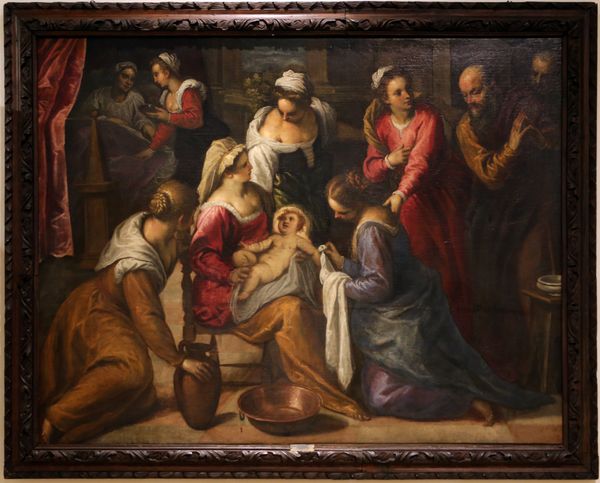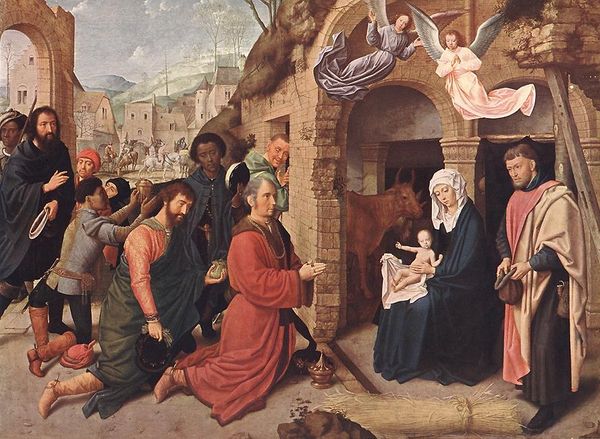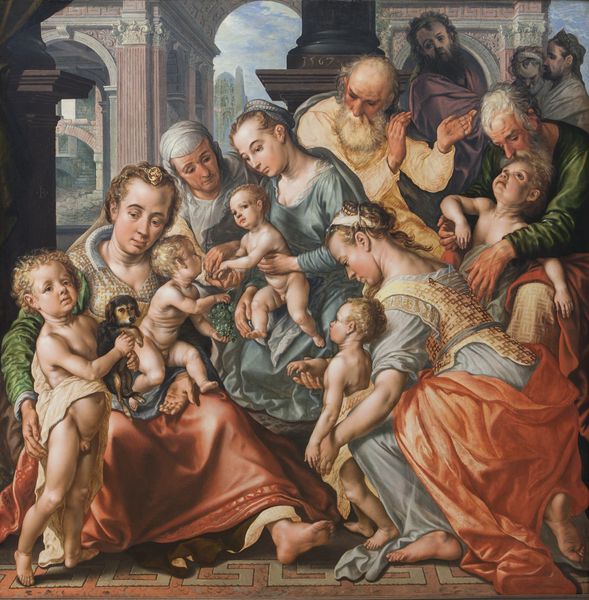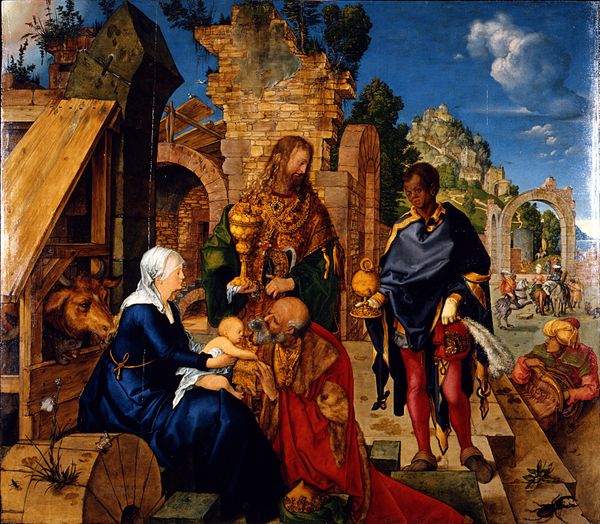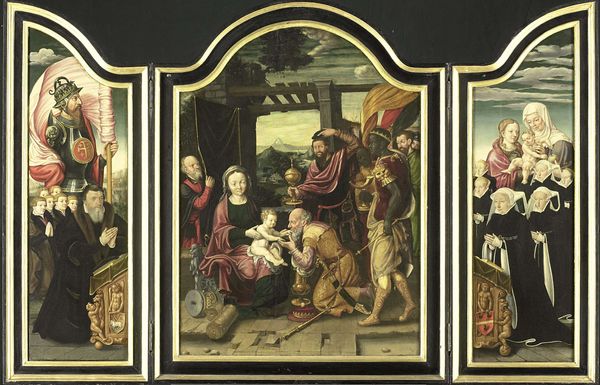
painting, oil-paint
#
painting
#
oil-paint
#
mannerism
#
figuration
#
oil painting
#
genre-painting
#
history-painting
#
realism
Dimensions: height 167.5 cm, width 180 cm, weight 62 kg
Copyright: Rijks Museum: Open Domain
Pieter Aertsen painted this Adoration of the Magi in the Netherlands sometime in the mid-16th century. This isn't your average nativity scene; rather than rustic simplicity, we're presented with a classical backdrop, complete with grand columns and figures reminiscent of Roman statues. The image's power lies in its layering of cultural references. Aertsen, painting at a time of religious upheaval with the rise of Protestantism, embeds traditional Christian imagery within a framework of classical motifs. It suggests a humanist intellectualism characteristic of the time. But is this choice simply an aesthetic one? Or does it subtly comment on the established religious institutions, perhaps aligning itself with the rising tide of reform? Understanding this work requires diving into the social and religious history of the Netherlands during this period. Scrutinizing the archives of artistic patronage and religious debates helps us to consider the complex relationship between art, religion, and society. Only then can we fully appreciate the painting's meaning within its original context.
Comments
rijksmuseum about 2 years ago
⋮
This altarpiece, which originally had two wings, is dedicated to the adoration of the newborn baby Jesus by the three magi, each of whom was represented on one of the panels. This centre panel depicts only the oldest king.
Join the conversation
Join millions of artists and users on Artera today and experience the ultimate creative platform.
